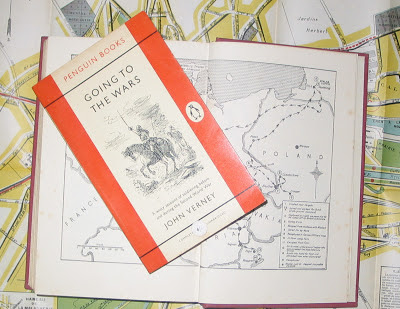I'd been planning to visit
Victoria Gardens in High Street, Prahran for some time, passing as I frequently do on the Number 6 tram. Hidden from the street, I didn't know what I'd find there; I imagined it might be dull, municipal, under-used. It is, in fact, a 5 acre oasis, bordered along its length by the back fences of neighbouring homes, which homes capitalise on their privileged views.
Many locals came and went, with their dogs, with their friends or alone, while I was there. Without what you'd call an exceptional design or planting palette, it is nonetheless much-used, tranquil, easy on the senses.
I'm reading
Paul Theroux's The Pillars of Hercules: A Grand Tour of the Mediterranean ( 1995 ). His intention was to circle the Mediterranean, clockwise, from Gibralter to Ceuta. He appears to have had no distinct plan other than this, over 18 months; I marvel that he just takes me along with him as he bumbles along the coast. He is erudite, open-minded. He isn't drawn to ruins or to sights or sites. He talks to you, the reader, as his confidant.
One of the delights of blogging is finding your plans undone. I'd intended to report on
Victoria Gardens in a thorough and considered way, reporting on it as if it and my experience mattered. What happened was that I found my garden photos were of little use...the gardens themselves were not especially arresting, or the unusually strong sunlight bleached my images, or I wasn't particularly interested in yacking on about a place no-one will go to.
Paul Theroux didn't much like Taormina in Sicily and didn't visit its Greek theatre. ( "
Nothing held me in Taormina." ) Though favoured by the Edwardians, and visited by a poetry-writing D H Lawrence,
"...these days it exists only to be patronized and gawked at. It was not a place to live in, only to be visited, one of the many sites in the Mediterranean that are almost indistinguishable from theme parks." ( P 179 )
I, however, would probably traipse here, being fond of ruins, if they are not tourist draw-cards. Above is an image of the theatre itself, taken from a little book I've found,
Provincial Art: Southern Italy and the Islands, published in 1957 by the Italian State Tourist Office.
But I am in Melbourne, and I'm recording pictures of statuary, garden furniture. So far, almost 2/3rds of the way through
The Pillars of Hercules, it's Corsica I'd most like to visit. Its fountains would be older than this bit of Victorian Neo-Classicism, but it's graceful here, this fountain, in one of Melbourne's inner suburbs.
Victoria Gardens were "
formally dedicated for public use" on 07 August 1885. They were laid out by William Sangster,
"well-known gardener and nurseryman of the firm Taylor and Sangster." He was
"once the gardener to John Brown of Como and was responsible for landscaping works at Stonnington, Rippon Lea, Daylesford Botanic Gardens and Wombat Park," so a little sign informs.
The gardens include this pergola and some stone shelters of a simplistic nature. There is a large
"oval depression in the centre" the size of a small soccer field
"and a symmetrical layout of paths." There are London Plane, Macadamia, Jacaranda, Plum Pine, Cape Chestnut, Prickly Paperbark, French Hawthorn, Lombardy Poplar, Yew, Lemon-scented Gum, Southern Magnolia, among others. Anything tough, vaguely Victorian.
I decided there wasn't much point elaborating on a garden whose chief merit was the joy it gave to all those bumbling in, if, from a visual point of view, its plantings and design were unexceptional. So, assuming some of the cheek of a travel writer who takes you where he wills, here above is one of the entrance gates, spearmint green, sort of Art Deco, just right against the treescape.
Beyond the Pillars of Hercules was the Unknown, the world beyond the Mediterranean, all that was chthonic. My plan had got skewed. I was somewhere unknown, but it was local and it wasn't frightening. I find that Paul Theroux doesn't exclude the tedious or ugly. He takes you where he goes, awkward or sublime, without judgement. He believes he's traveling alone, but I feel I'm looking over his shoulder.
Above, the statue of Victory,
"supposedly a copy of one erected in Berlin to commemorate the Battle of Waterloo," or the Prussian victory in the Danish-Prussian War, depending where you read. Victory, to me, REAL
victory, entails a dissembling of self, a preparedness to 'get lost', an acknowledgement that the places we go to, whether they are far or near, have the propensity to shake us up a bit out of our known self.





























